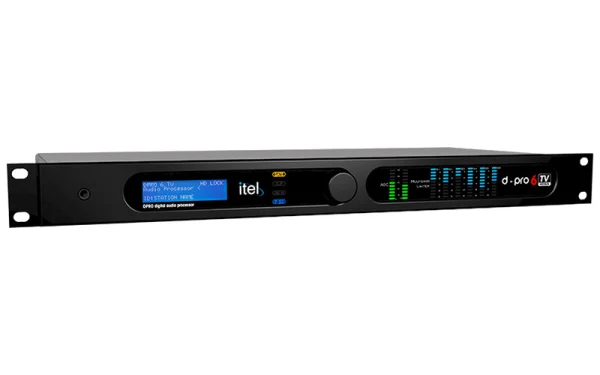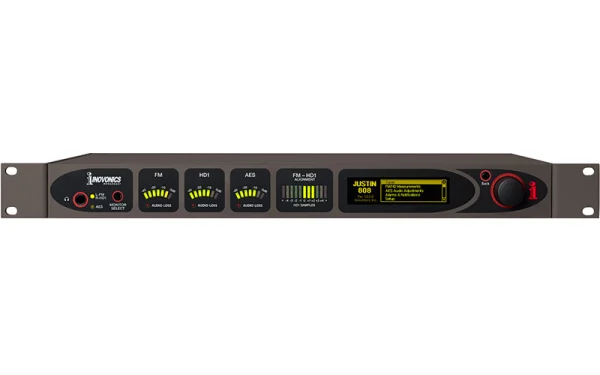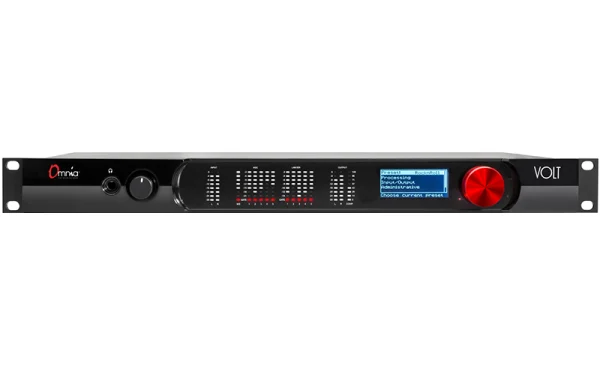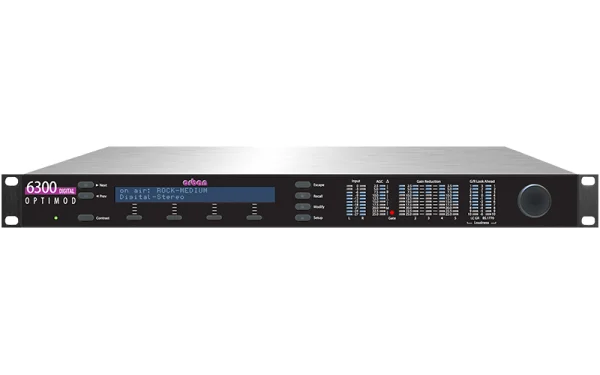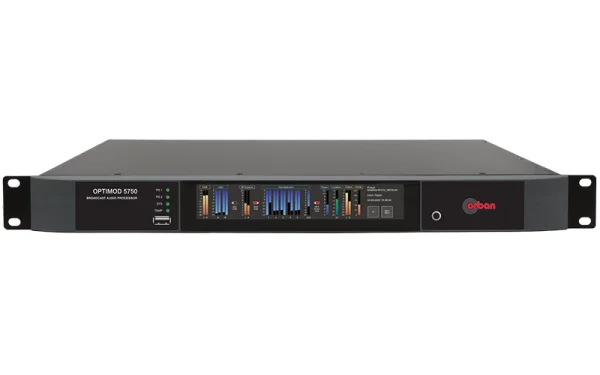Showing 61–75 of 75 resultsSorted by price: low to high
ITEL DPRO6 TV
In stock
Biquad DAP4-TV
In stock
Inovonics 719N David IV
In stock
Inovonics JUSTIN 808
In stock
| Weight | 3.8 kg |
|---|---|
| Dimensions | 64 × 44 × 8 cm |
| features |
Precise time alignment between analog FM and HD1 metering ,etc. |
| Color |
Black |
| specification |
CONNECTIVITY Receiver Input AES Digital Audio I/O:AES3 (XLR) digital audio loop-through; 44.1kHz sampling rate Network Interface: LAN (RJ45) connection to local network and through user’s router to Internet for full Web Interface remote control and monitoring. PLACEMENT IN AIRCHAIN In HD Radio AES Audio Feed: the JUSTIN 808 will automatically correct diversity delay errors and r.m.s. level errors between the FM and HD1 programs In Analog FM AES Audio Feed: the JUSTIN 808 is capable of providing the entire diversity delay ,if required. It will automatically correct diversity delay errors ,but cannot normalize r.m.s. level errors between the two programs. DELAY CORRECTION Correction Resolution: Maximum Delay Error Correction: Time Required to Correlate Delay Errors: Time Required to Correct Delay Errors: “Catch-Up” Button Feature: also accessible via the Web Interface ,permits a manual time alignment quick reset to a previous long-term mean value. This obviates correlation acquisition and brings time alignment close to the required figure. AUDIO LEVEL & PHASE CORRECTION The JUSTIN 808 offers automatic program phase correction when a phase reversal is sensed between the analog FM and digital HD1 program channels. R.M.S. level correction is also available when the JUSTIN 808 is placed in the AES digital audio feed to the HD Radio exciter. ALARMS AND LOGGING Alarm Conditions 2. Audio Loss or Levels Out of Range a. AES Loop-Through b. Off-air FM Audio c. Off-air HD1 Audio 3. Out of Alignment Range (user preset) Alarm Indications: 2. Rear-panel ground-closure ‘tallies’ with selectable logic polarity 3. SMS-text/email notifications via SMTP 4. JUSTIN 808 Webpage indication Alarm Logging: WEB INTERFACE The JUSTIN 808 Web Interface is compatible with desktop/laptop computers ,tablets and smart phones ,and supports SNMP with a downloadable MIB file. All functions available at the front panel are duplicated by the Web Interface. MISCELLANEOUS Power Requirements: 50/60Hz; 20 watts Size and Weight: Environmental: |
| Ship Separately |
0 |
| video |
0 |
| Product can be split into multiple boxes |
0 |
Omnia.9sg
In stock
Omnia VOLT FM
In stock
Omnia VOLT AM
In stock
Omnia VOLT HD PRO
In stock
Orban OPTIMOD 6300
In stock
| Weight | 8.2 kg |
|---|---|
| Dimensions | 60 × 60 × 15 cm |
| features |
User-Friendly Interface An LCD and full-time LED meters make setup ,adjustment and programming of the 6300 easy you can always see the metering while you are adjusting the processor. Navigation is by dedicated buttons ,soft buttons (whose function is context-sensitive) ,and a large rotary knob. The LEDs show all metering functions of the processing structure (Two-Band or Five-Band) in use. to "Modify" processing ,or to access the system's Setup controls. Absolute Control of Peak Modulation The 6300 precisely controls peak levels to prevent clipping or overmodulation in transmission media. The maximum level of the digital samples is controlled to better than 2%. accuracy is 0.2 dB Without true peak control ,analog clipping can occur even if all peak values of the digital samples are below 0 dBFS. This phenomenon has also been termed "0 dBFS+." sample rate conversion ,unless it removes high frequency program energy or introduces group delay distortion ,cannot cause sample peaks to increase more than 0.5 dB. For example ,sample rate con-version from 48 kHz to 44.1 kHz is highly unlikely to cause sample peak clipping in the 44.1 kHz audio data. the 6300 can also provide pre-emphasis limiting for the two standard preemphasis curves of 50µs and 75µs. This allows it to protect pre-emphasized satellite uplinks and similar channels where protection limiting or light processing is required. Flexible Configuration The 6300 includes analog and dual AES3 digital inputs and outputs. The digital input and digital outputs have sample-rate converters and can operate at 32 kHz ,44.1 kHz ,48 ,88.2 ,and 96 kHz sample rates. The pre-emphasis status and output levels are separately adjustable for the analog and digital outputs. independent audio processing for flat and pre-emphasized channels. Even though one output may be pre-emphasized while other is flat ,the only difference between the outputs is that the "flat" output has de-emphasis applied to it after the processing while the pre-emphasized output does not. all configurable to use or bypass look-ahead limiting. while 10 kHz is appropriate for 24 kHz sample frequency. facilitating dual-language operation. In this mode ,both processing channels operate using the same processing parameters (like release time); you cannot adjust the two channels to provide different processing textures. Adaptability through Multiple Audio Processing Structures A processing structure is a program that operates as a complete audio processing system. Only one processing structure can be on-air at a time. The 6300 realizes its processing structures as a series of high-speed mathematical computations made by Digital Signal Processing (DSP) chips. and Two-Band for a transparent sound that preserves the frequency balance of the original program material while also effectively controlling subjective loudness. Orban's PreCode™ technology manipulates several aspects of the audio to minimize artifacts caused by low bitrate codecs ,ensuring consistent loudness and texture from one source to the next. PreCode includes special audio band detection algorithms that are energy and spectrum aware. This can improve codec performance on some codecs by reducing audio processing induced codec artifacts ,even with program material that has been preprocessed by other processing than Optimod. There are several factory presets tuned specifically for low bitrate codecs. preventing audience irritation. The controller measures subjective loudness (as perceived by an average listener) and then closes a feedback loop to limit loudness to a preset level. It effectively controls loud commercials ,which are the primary irritant in sound-for-picture applications. Third generation improvements reduce annoyance more than simple loudness control alone ,doing so without audible gain pumping. New in version 2.0 software is the ability to adjust the attack time ,trading off short-term loudness control against transient punch. labeled Loudness Level in the 6300's GUI ,uses the CBS Technology Center algorithm developed by Jones and Torick. When used to drive a transmission channel using the Dolby Digital® codec ,the Loudness Level meters (one for stereo processing or two for dual-mono processing) can be aligned to the Dialnorm metadata value in the Dolby Digital bitstream conveying the 6300's output signal to the consumer's receiver. When this is done ,the loudness level at the receiver will be correct when the 6300's processing is adjusted to make dialog peak at "0 dB" on the 6300's Loudness Level meter. This processing fully complies with the loudness control requirements in ATSC A/85:2011 and EBU R 128. DVD ,or Blu-ray media. The CBS Loudness Controller is not needed with the Five-Band processing because the Five-Band processing's spectral consistency creates consistent loudness as a desirable byproduct. compressing dynamic range and compensating for both operator gain-riding errors and gain inconsistencies in automated systems. The AGC output is available to drive STLs ,so the 6300 can be used as a studio AGC. making the 6300 perfect for applying subtle compression in mastering applications. The 6300 can be remote-controlled by 5-12V pulses applied to eight programmable ,optically isolated "general-purpose interface" (GPI) ports. Vista ,7 and 8. It communicates with a given 6300 via TCP/IP over modem ,direct serial ,and Ethernet connections. You can configure PC Remote to switch between many 6300s via a convenient organizer that supports giving any 6300 an alias and supports grouping multiple 6300s into folders. Clicking a 6300's icon causes PC Remote to connect to that 6300 through an Ethernet network or initiates a Windows Dial-Up or Direct Cable Connection if appropriate. The PC Remote software allows the user to access all 6300 features (including advanced controls not available from the 6300's front panel) and allows the user to archive and restore presets ,automation lists ,and system setups (containing I/O levels ,digital word lengths ,GPI functional assignments ,etc.). which allows automation of various events (including recalling presets) at pre-programmed times. To ensure accuracy ,the clock can be synchronized to an Internet timeserver. by remote control (from either the 6300's GPI port or the 6300 PC Remote application) ,or by automation to permit broadcast system test and alignment or "proof of performance" tests. facilitating quick and accurate level setting in any system. or locally (by connecting a Windows® computer to the 6300's serial port through the supplied null modem cable). |
| Ship Separately |
0 |
| Product can be split into multiple boxes |
0 |
Orban Optimod TRIO
In stock
Orban OPTIMOD XPN-Enterprise
In stock
Orban OPTIMOD 5750
In stock
Thimeo STXtreme
In stock
Telos Z/IPStream R/20
In stock
Orban OPTIMOD 5950
In stock

